
This past summer, two Oakland firefighters came to my apartment building to get a replacement key for the knox box, which is outside all multiple unit buildings, to allow firefighters to access the building in emergencies. Striking up a conversation with them, I asked if they had ever been at any of the wildfires, or other emergencies far from Oakland, such as Hurricane Katrina in Louisiana. This brief conversation piqued my curiosity and I had a chance to interview seven of our local Oakland Fire Department firefighters. Like many people, I often see fire engines in front of buildings which are not on fire, and I learned that firefighting is only one part of what firefighters do.
I learned that the workforce is fairly diverse: about 36% of Oakland’s firefighters are white, 24% are Black, 21% are Latinx, and 13% are Asian, with the remainder Pacific Islanders, Native Americans, or multiracial. We have a total of 452 firefighters right now, according to the fire department. While more women are joining the ranks, the vast majority of Oakland’s firefighters, at 92%, are men. Eight person of Oakland’s sworn firefighters are women or non-binary. Nationally, less than 5% of firefighters are women, according to the National Fire Protection Association, so Oakland’s ranks are still more diverse.
Below, I chatted with some of Oakland Fire Department’s firefighters to learn more about what they do and what drives them to do their work.
Sean Gascie, Battalion Chief at Station 20 in East Oakland, OFD for 24 years

Sean Gascie got his start in firefighting while attending classes at Chabot College. In one of the classes, he was able to do ride-alongs. “At the fire station, I was able to do the ride-along program for a couple of years, so you’re basically like an intern. It’s a class, you’re showing up, you get the experience of being there, you’re not going in fires because you’re not hired. It’s just a class, but you’re there working after the fire’s put out, you’re there doing physical work, working side-by-side with firefighters.”
Initially, Gascie was considering other occupations. He went to school to be a communications major. He explains that many of his family members are in the medical field, from doctors and nurses to paramedics and firefighters. “But I never really thought about it for myself, but I knew I loved to talk and hang out with people, heavy in sports, and teamwork, so I went to school for communications, so I wound up talking with my cousin one day. She’s a nurse and her husband’s a firefighter in Modesto, and he was like ‘You should really come hang out with me and see if you like it.’ I thought about it, but I wanted to do the communications thing but after sitting there for a day, after talking with different firefighters, I found out it had everything that it took for them to excel on the job was one of my character traits, was one of my qualities. So, it was like, I love helping people, I love teaching, I love working as a team, I love sweating, and working out, I love cooking, I love a challenge, I love competitiveness.”
I love helping people, I love teaching, I love working as a team, I love sweating, and working out, I love cooking, I love a challenge, I love competitiveness.
Sean Gascie, Battalion Chief at Station 20 in East Oakland, OFD for 24 years
Among notable experiences, Gascie received a Silver Medal of Valor. “We saved a family, a father and his two kids when I was a firefighter. I didn’t think I was to receive a medal for it, because it was what we were supposed to do, but we did that. It was an amazing experience, that’s always one of my highlights.”
Gascie explains that a big portion of what firefighters do is medical, and some of the work can involve some of the most difficult and even horrifying situations imaginable. “We don’t have fires all the time, though we do way more often in Oakland than in neighboring cities. I have delivered five babies in the last 25 years. We do a lot of animal rescues.” Gascie also mentioned some of the emergencies that address tragedy, including suicides.
“Family members, people who have lost someone, and having to console them, and be their support at that time; it changes your perspective on a lot of life, you look at life differently, you go home and you’re very humbled.”
Gascie concludes, “I feel so privileged. I love my city.”
Daniel Sarna, Oakland Fire Department Lieutenant, 19 years firefighting

Daniel Sarna has followed his father and uncle’s footsteps, but it wasn’t until he got into the Fire Explorer Program that he became interested in being a firefighter himself. When he joined the Boy Scouts at 14 years-old, it also sparked his interest in firefighting. He was later hired as a seasonal firefighter for Cal Fire. “My dad’s first cousin was a firefighter and he got my dad interested. My dad was a mechanic, taking night classes, going to school when he could, and he wound up in the fire department when I was 10 years old. That was the first introduction,” Sarna explains.
Sarna was one of the Oakland firefighters who responded to the Ghost Ship fire emergency in December 2016. Sarna says that fire weighs heavy on his mind, because by the time firefighters arrived on scene, many people had already died.
“By the time it was reported and we got there, there was nothing survivable in that building. Even if we would have reached them as soon as we got there, there would have been no survivability chance. There was too much smoke, too much heat. The human body could not survive it. But for the time it took for them to notify the fire department, it was really too late. No one was notified right away. Unfortunately, the people upstairs wound up being cut off and trapped by fire and there was nowhere they could go; there was no way out the windows; there were limited exits. There was nowhere for them to go; they were trapped.”
While the Ghost Ship Fire was a big tragedy, Sarna said that there are also very rewarding times. Among highlights, Sarna mentions delivering someone else’s child. “The first time, it was before my daughter was born, but it was a very happy feeling and very rewarding. The baby was healthy, mom was healthy. That can be a very rewarding feeling when everything goes right.”
Being an Oakland firefighter often means going beyond the city limits. “I have been deployed to wildfires. I was up at the Dixie fire; it’s very different tactically. It’s on a very large scale.”
One aspect of being a firefighter is the variety of assignments. “It is very unpredictable, because in a city, there are weather influences, mostly wind, but on a wildland incident, heat, wind, relative humidity, topography, things can go from very calm and controlled to out of control and erratic.”
We are really there for the community, whether that be preventative things, at-risk things, homeless issues, youth.
Daniel Sarna, Oakland Fire Department Lieutenant, 19 years firefighting
Sarna points out that extinguishing fires is only part of what firefighters do. “People forget that the fire department is an all-risk service that the city provides, except that we do everything, except crime, unless it has to do with arson. When a pipe bursts, we show up and figure out how to turn the water off until the plumber shows up, which could be hours. It causes electrical issues; we really do everything. We teach, and we really put the citizens first, whether that means us being injured or hurt. We handle all kinds of emergencies.”
Sarna also talks about the training firefighters receive. “We teach at the academy. Every fire, someone gets hurt, gets injured, they’re risking themselves to help others. We are really there for the community, whether that be preventative things, at-risk things, homeless issues, youth. We’re there for the community, whether preventative, for at-risk youth, reading programs, we’re doing a lot of different things. We enjoy it.”
Tracey Chin, Battalion Chief, firefighter for 23 years
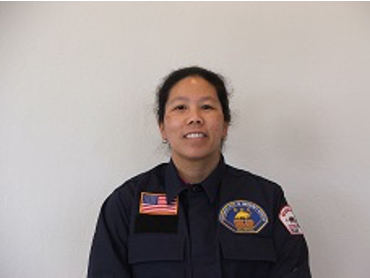
Tracey Chin grew up in Kingston, Jamaica and Miami, Florida, and later, Garden Grove, California.
Chin entered the fire service after college, attending Merritt College’s Fire Science Technology Program in Oakland. “I met amazing people and learned life altering skills that motivated me to seek a profession in fire service,” Chin reflects.
Among memorable experiences, she notes that giving an infant medication to combat an allergic reaction as well as being at the 31st Avenue fire, usually described at the Ghost Ship Fire.
Chin notes the importance of working with others, and that being a firefighter requires a lot of social skills and in person interactions. “Not just what the immediate emergency is. Quality of life issues and connection to services are among the unique aspects of the work of firefighters that many people may not associate with firefighting work.”
She finds the most challenging aspects of being a firefighter to be balancing work and life. Chin has not been deployed to fire California wildfires since 2008, but comments “I would do it again.”
Damon Covington, Battalion Chief, 22 years as firefighter
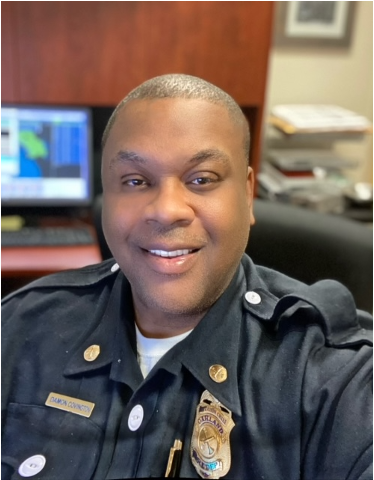
Damon Covington was introduced to firefighting while still in high school. He took a class at Bishop O’Dowd called Campus Ministry, where they did warm coat drives and volunteered at homeless shelters, among other things. “That introduced me to public service,” he explains.
Like many of his colleagues, Covington noted the holiday program as one of the positive experiences of his work. “For the last 15 years, I’ve helped put together a holiday basket program through the Black Firefighter Association, which was founded in 1973 with a mission to create opportunities for African American and other minorities in the fire service. We give out chicken, turkeys, beans, and other food to families in Oakland. This year, we gave food to 1,200 families. That’s been extremely rewarding for me.”
During the course of his career, Covington says he has gone to “thousands of fires.” While they are all different, he says they also have some things in common: “the sadness that comes with it. People have lost all of their belongings is a common theme across all fires, while it’s something that we do regularly. It’s an indelible thing they will never forget.”
“Across the landscape of the fire service, you’d be hard pressed to find anyone who doesn’t do their job. It’s very rewarding, to give back to the community that helped shape me to who I really am.”
Damon Covington, Battalion Chief, 22 years as firefighter
Covington says there are a lot of misconceptions about firefighters that the public doesn’t understand. “We live here. COVID and omicron, [we] learn how to cohabitate and not get each other sick. We buy all our own food. We go to bed and we get woken up multiple times per night. That’s why we have the schedule of two 24-hour days, then four days off.”
Covington’s training in EMT and paramedics helps save lives in emergencies. There are limited ambulances, he says. “We can start the initial interventions. We’ve come in when people were unconscious, we’ve started CPR, we’ve given them lifesaving drugs, we’ve shocked them, given them fluids, gotten them to the hospital.”
His current role is special operations at the Oakland Airport, managing specialist groups like the hazmats and airport firefighters. “We have to respond to calls of people being put off the plane, drunk or belligerent, but we only handle the medical.”
Covington says that this career is truly one that people choose because they are passionate about giving back to the community. “Across the landscape of the fire service, you’d be hard pressed to find anyone who doesn’t do their job. It’s very rewarding, to give back to the community that helped shape me to who I really am.”
+ + +
Read Part 2 of our Oakland firefighters profiles here.
Correction: The original article stated that 83 percent of Oakland’s firefighters are men, which included non-sworn members. We have updated the article to reflect that 8 percent of Oakland’s firefighters are women or non-binary, not 17 percent.
Debora Gordon is a writer, artist, educator and non-violence activist. She has been living in Oakland since 1991, moving here to become a teacher in the Oakland Unified School District. In all of these roles, Debora is interested in developing a life of the mind. “As a mere human living in these simultaneously thrilling and troubled times,” Debora says, “I try to tread lightly, live thoughtfully, teach peace, and not take myself too seriously.”

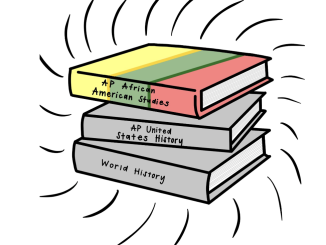
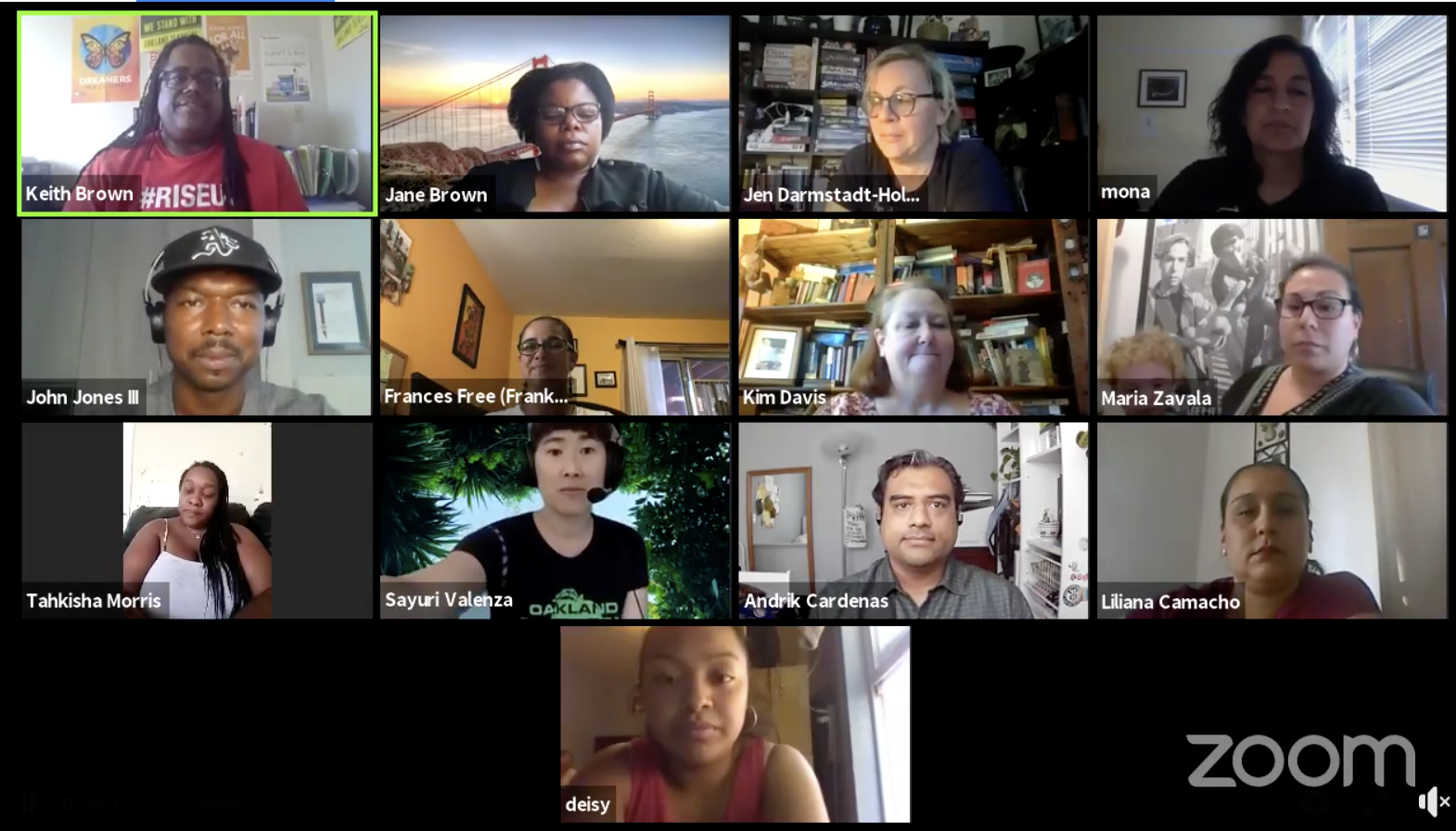
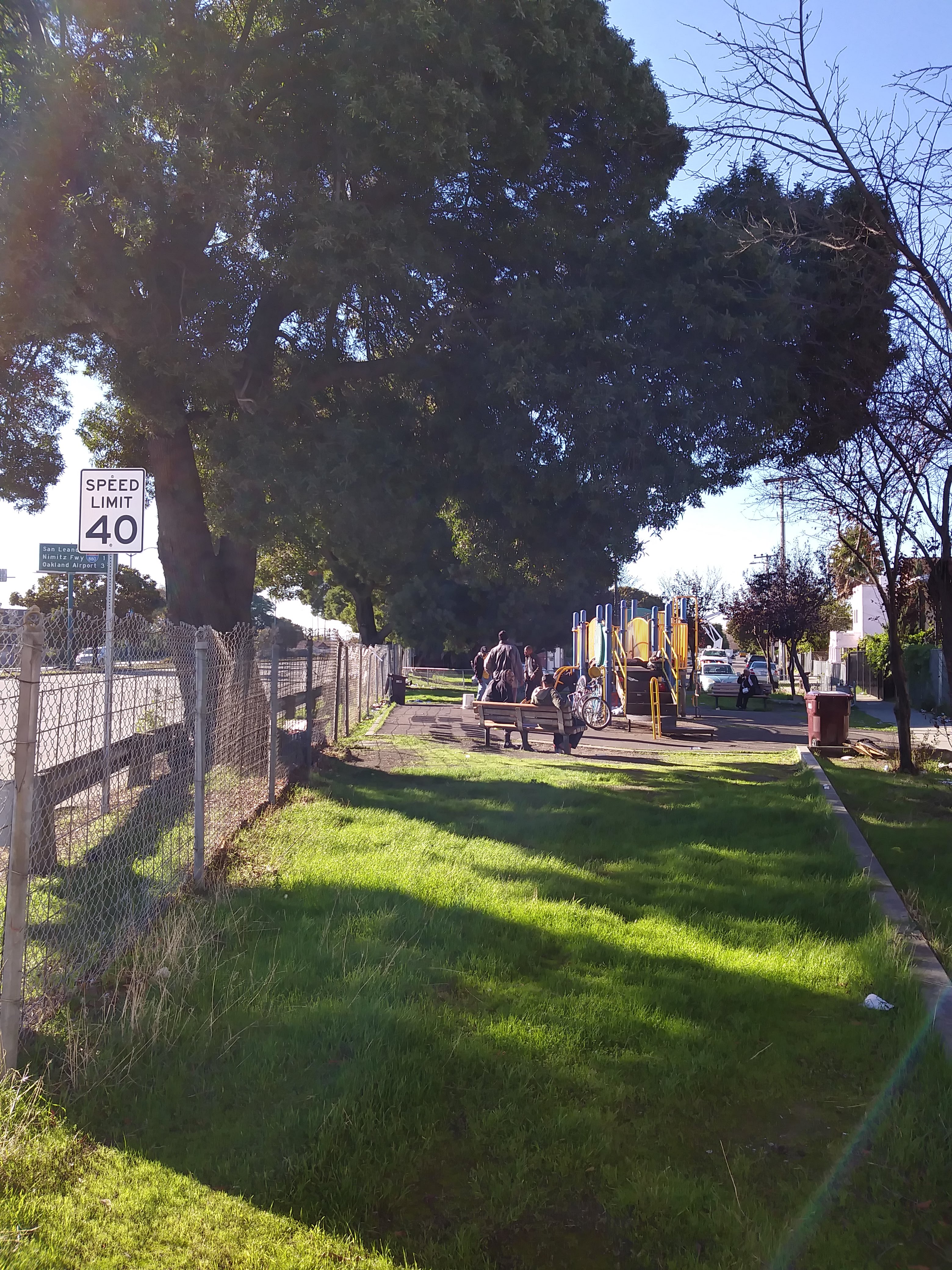
1 Trackback / Pingback